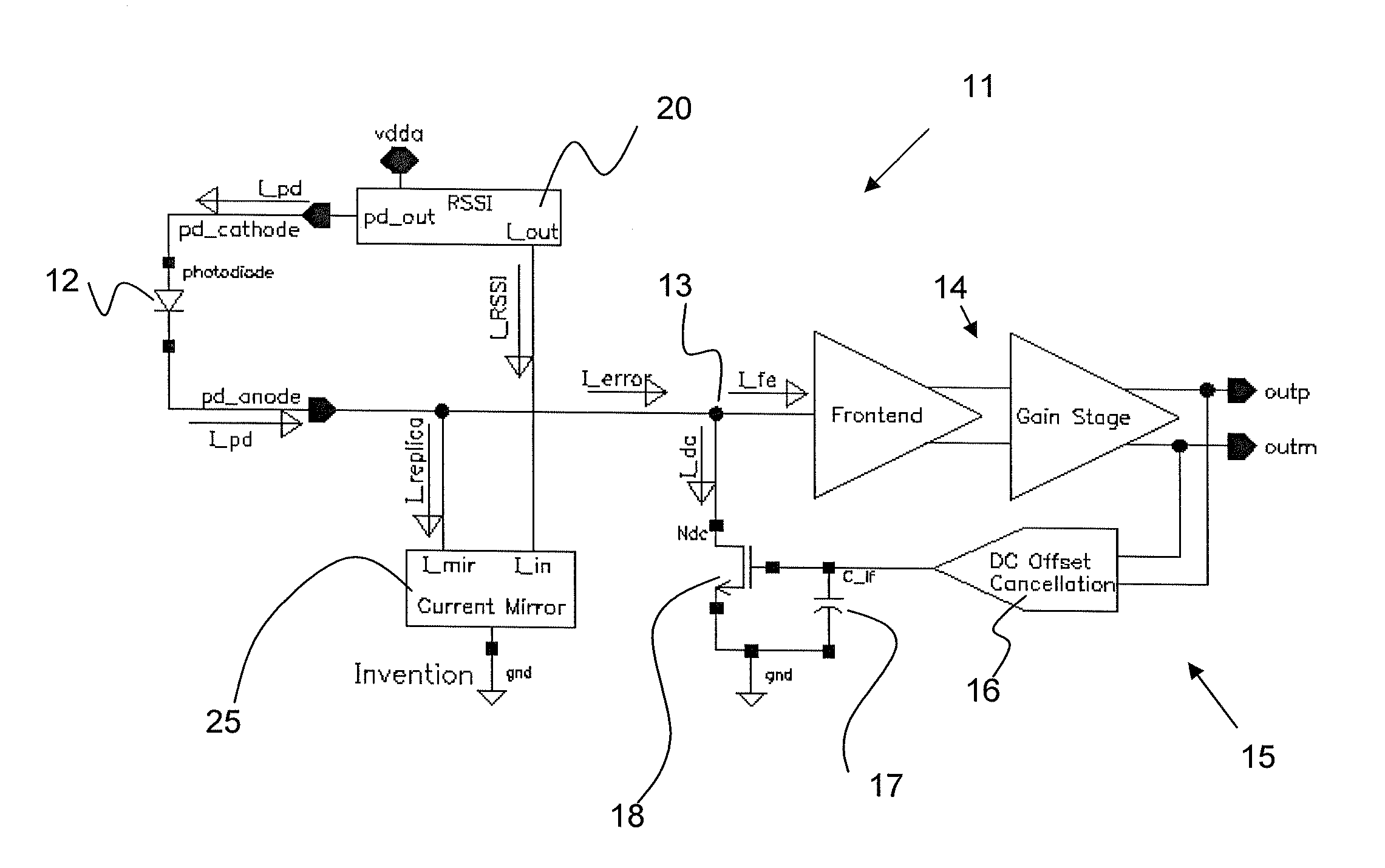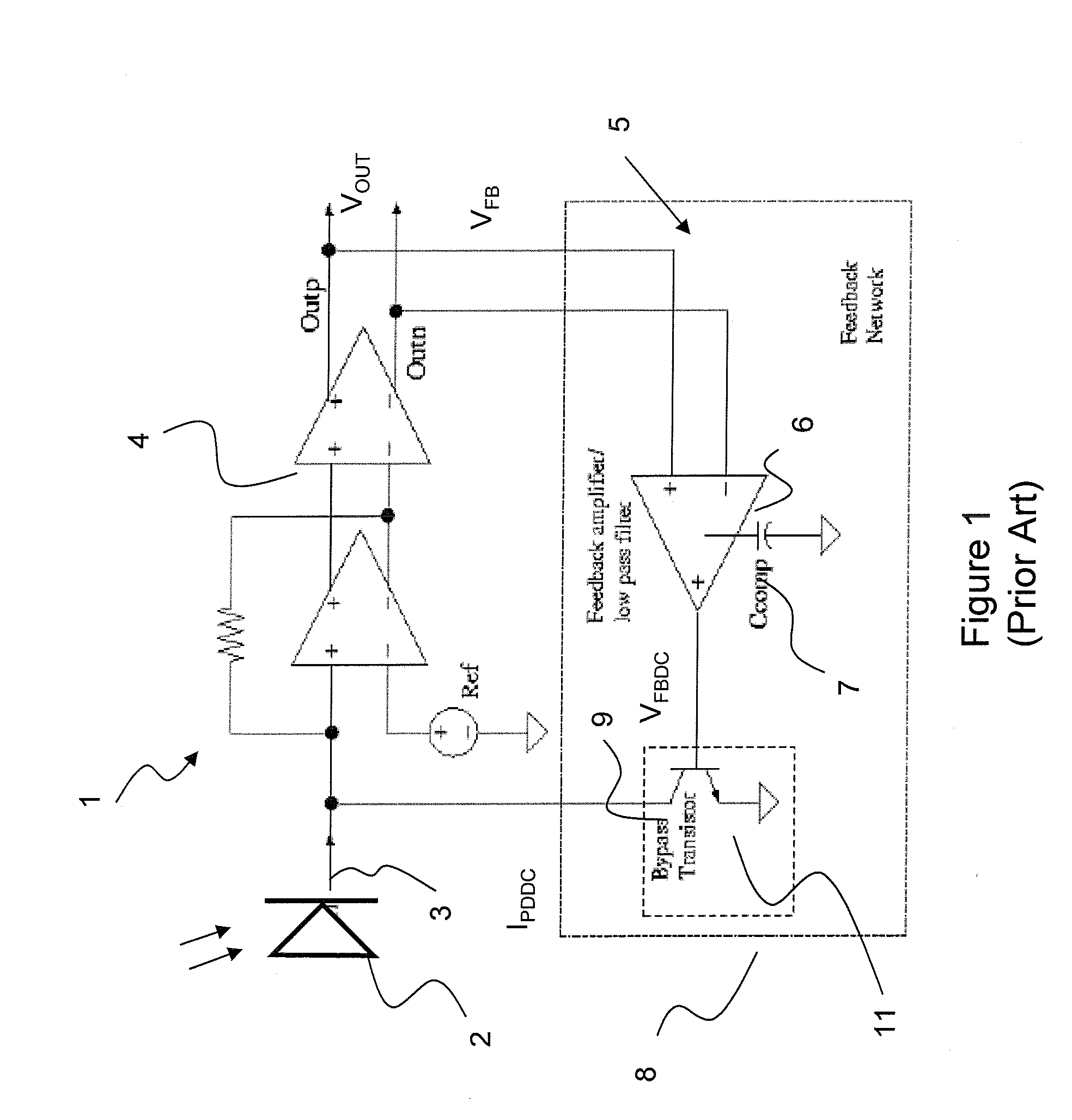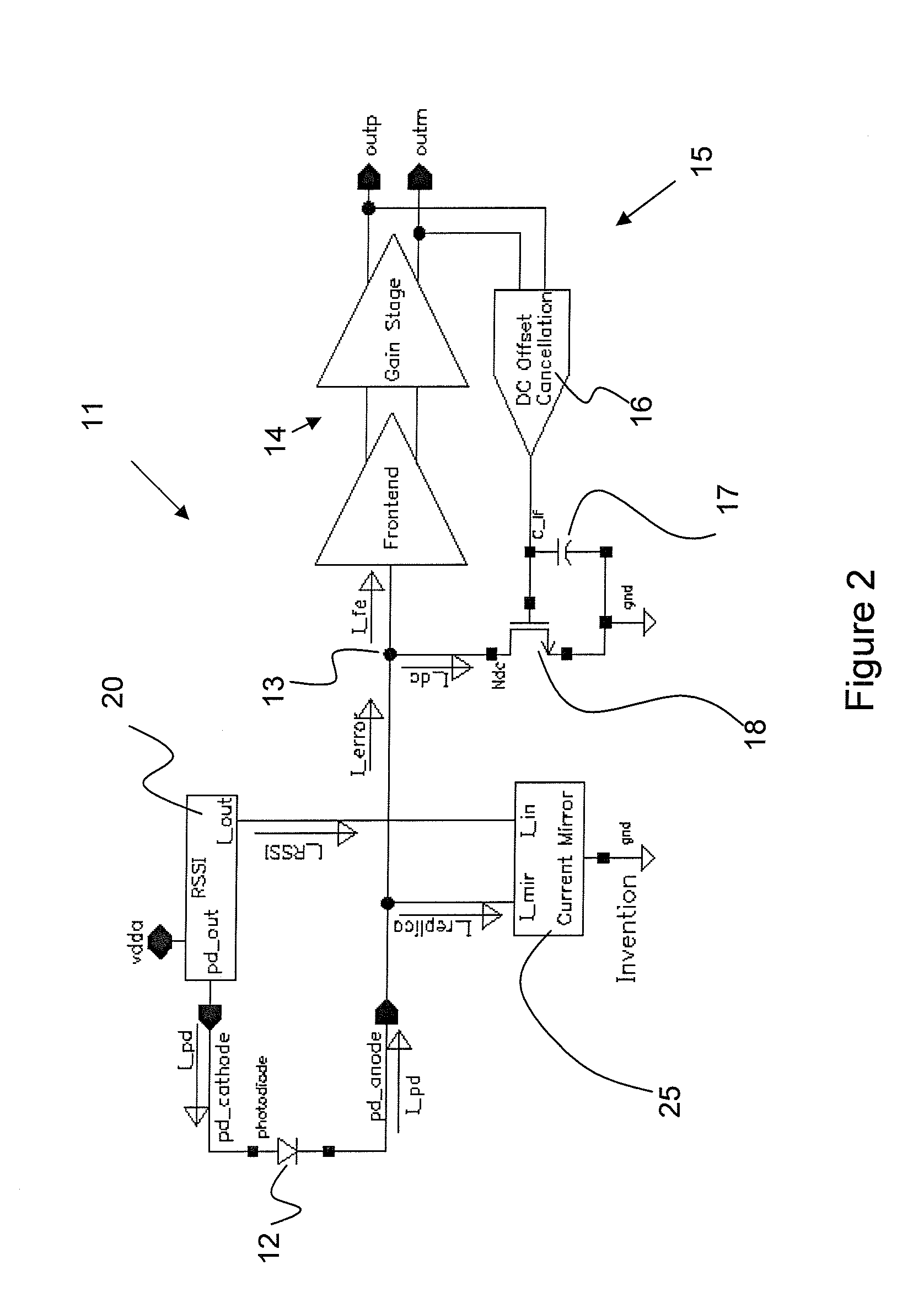DC Offset Cancellation For A Trans-Impedance Amplifier
a trans-impedance amplifier and offset cancellation technology, which is applied in the direction of amplifiers, amplifiers with semiconductor devices only, amplifiers with semiconductor devices, etc., can solve the problems of 40 db difference between low and high values, 100 times more difficult and expensive to integrate on-chip
- Summary
- Abstract
- Description
- Claims
- Application Information
AI Technical Summary
Problems solved by technology
Method used
Image
Examples
Embodiment Construction
[0014]The present invention solves the aforementioned problem by using the output current from a photodiode monitoring circuit, e.g. a Receive Signal Strength Indicator (RSSI), to cancel the dc offset current from the photodiode before entering the trans-impedance amplifier (TIA). As illustrated in FIG. 2, a TIA circuit 11 receives photodiode current IPD from a photodetector, e.g. photodiode 12, via input terminal 13, and converts the photodiode current IPD to a voltage that is further amplified by an amplification chain 14, thereby producing a differential output voltage VOUT=Outp-Outn.
[0015]Conventional DC offset cancellation is accomplished by a feedback network 15 including a feedback amplifier 16 / low pass capacitor filter 17, and bypass transistor 18 combination, as hereinbefore discussed, integrated on a integrated circuit chip; however other means of DC offset cancellation are possible within the scope of this invention.
[0016]A photocurrent monitor function provides a DC sign...
PUM
 Login to View More
Login to View More Abstract
Description
Claims
Application Information
 Login to View More
Login to View More - R&D
- Intellectual Property
- Life Sciences
- Materials
- Tech Scout
- Unparalleled Data Quality
- Higher Quality Content
- 60% Fewer Hallucinations
Browse by: Latest US Patents, China's latest patents, Technical Efficacy Thesaurus, Application Domain, Technology Topic, Popular Technical Reports.
© 2025 PatSnap. All rights reserved.Legal|Privacy policy|Modern Slavery Act Transparency Statement|Sitemap|About US| Contact US: help@patsnap.com



